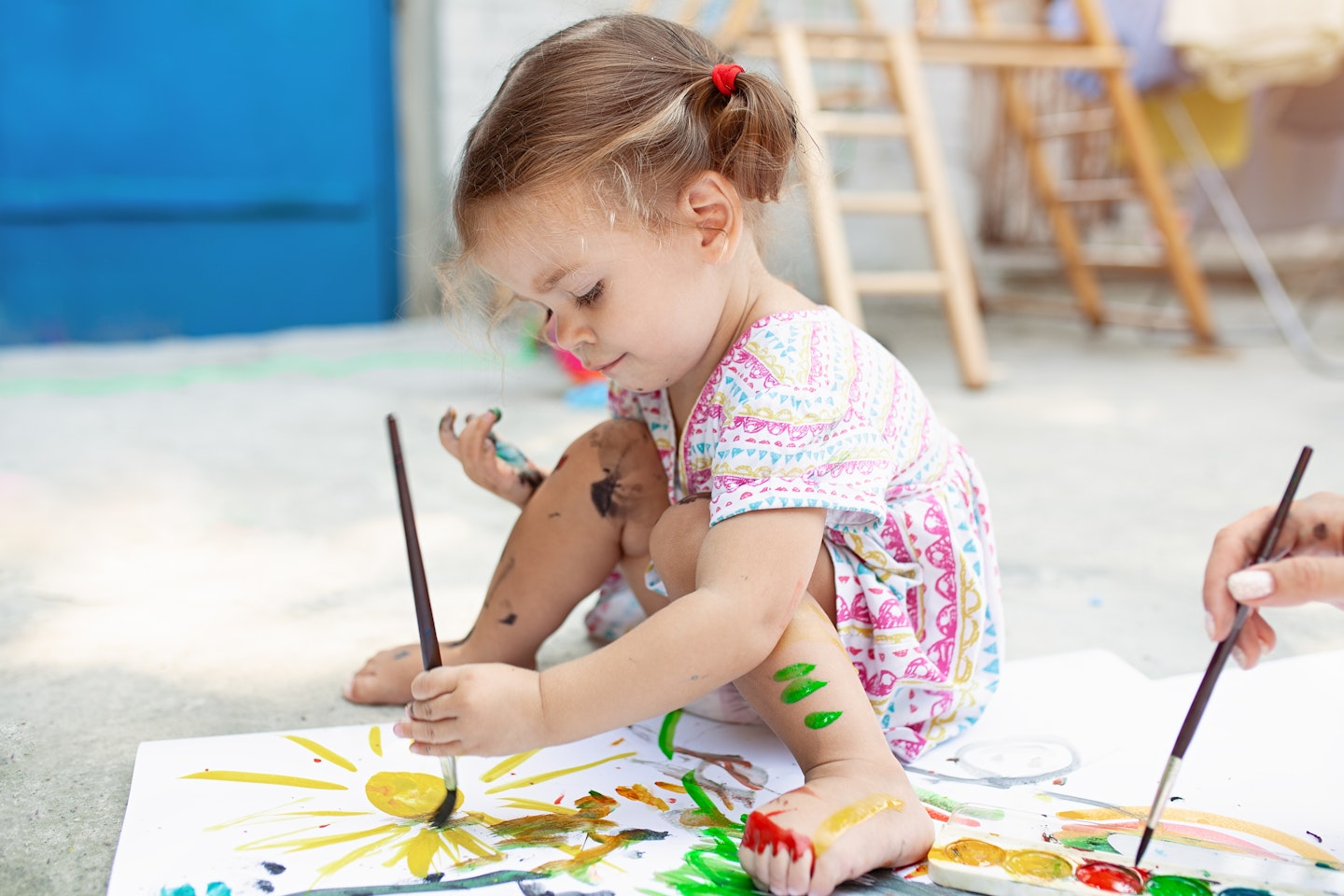Considering how tricky it can be to get your baby to sleep in the first place, you probably don't even want to think about the day when your toddler no longer naps in the day. But there might be a little part of you wondering, when do toddlers stop napping?
Whatever you use your tot's nap times for, whether it's getting a load of washing on, squeezing in some post-natal exercises, reading a page or two of your book or even taking a nap yourself, saying goodbye to those precious few hours can be difficult.
When do toddlers stop napping?
Every toddler is different, but you might find that your toddler cuts down the amount of time they nap for between one and two years old. Your toddler has a lot more energy to burn, so that midday nap is often the extra push they need to make it to the bedroom with fewer tantrums. But sadly, by the age of four, your toddler will have probably stopped nap time altogether.
Signs your toddler is ready to stop napping
Generally, your child will stop napping when they simply no longer need the extra rest to keep up their energy levels. Similarly, you may find that new developmental milestones will keep them awake or make it a struggle for them to fall asleep.
Here are a few possible signs your child is ready to ditch the naps:
• You find that your toddler copes just fine if they miss a nap, and they don't seem grumpy or exhausted.
• It takes them longer to fall asleep than they actually nap for.
• They find it difficult to fall asleep at bedtime. This is when you would try reducing naps.
• They wake up early in the morning, suggesting they weren't tired enough at night, possibly due to a nap.
What to do when your child stops napping
Revisit the bedtime routine
If you've spotted the signs that it's time to give up the naps or you're experiencing some toddler sleep regression, you'll want to make the most of bedtimes by re-establishing the bedtime routine you started up when your toddler was a baby.
As you already know, a bedtime routine encourages your child to sleep and since they're no longer napping, this is even more important to help you both catch some shuteye.
Possible ways to help your child unwind at night include:
• A bathtime routine
• Reading a bedtime story for toddlers
• Switching on a light projector
• Ditching the tablet at least an hour before bed
• Plenty of cuddles
Differentiate day and night
Helping your child learn the difference between day and night makes it easier for them to understand that nighttime = sleep. One way to do this is by keeping the blinds or curtains open and enjoying plenty of stimulating play during the day and then in the evenings, keep lights dimmed and use a calm, quiet voice to speak along with your bedtime routine.
Alternatively, you may want to pick up a Tommee Tippee Groclock Sleep Trainer Clock.
Adjust bedtime
Some mums and dads decide to adjust bedtime when they get rid of their baby's naps to help ease the transition. Your child requires a certain amount of sleep (e.g. 11-14 hours for a one-two-year-old) and without naps helping to reach this amount, you might want bedtime to start a bit earlier to help achieve this.
How to manage without a nap
When your toddler is awake from the crack of dawn until they finally give in at bedtime, it can cause over-tiredness, toddler tantrums that are tricky to manage and it can be difficult for your tot to adjust to their new routine. Here are five ways to help your little one (and you) make the day easier with no nap!
 1 of 5
1 of 5Start your day earlier
Don't worry, we don't mean you have to get up an hour earlier than normal! Try and get as many of your jobs ticked off earlier on in your day. Your toddler may get a little grumpy in the afternoons if they aren't having a nap, (especially at first), which might make getting any jobs done a lot harder.
 2 of 5
2 of 5Encourage quiet time
When your toddler would usually take a nap, try and encourage them to have a little rest by having some quiet time. This could be playing soothing music, having a cuddle on the sofa or reading a book - anything that doesn't involve a lot of energy or running around! A little rest, even if it's only for 20 minutes, will be good for the both of you, and refuel your tot for the rest of the day!
 3 of 5
3 of 5Put on a film
Although we don't recommend letting your tot watch TV all day, putting their favourite film or show on for an hour is a great way to get them to take a break and chill out.
 4 of 5
4 of 5Avoid sugary foods
When your tot has a sugar crash it can be challenging enough, but throw in tiredness as well from not having a nap and you've got a huge tantrum pending! Make sure your little one is having healthy foods throughout the day that will help boost his mood and concentration. Instead of reaching for the chocolate biscuits from the cupboards too, why not try some healthy snacks?
 5 of 5
5 of 55) Create an activity box
You might not always have time to do this, but each day put a new activity in a box, such as different craft supplies, puzzles or an activity that encourages your toddlers motor or sensory development. When you can see your tot getting a little restless, give them the box and let their imagination run wild! Let them build the tallest tower and paint a gallery of pictures.
